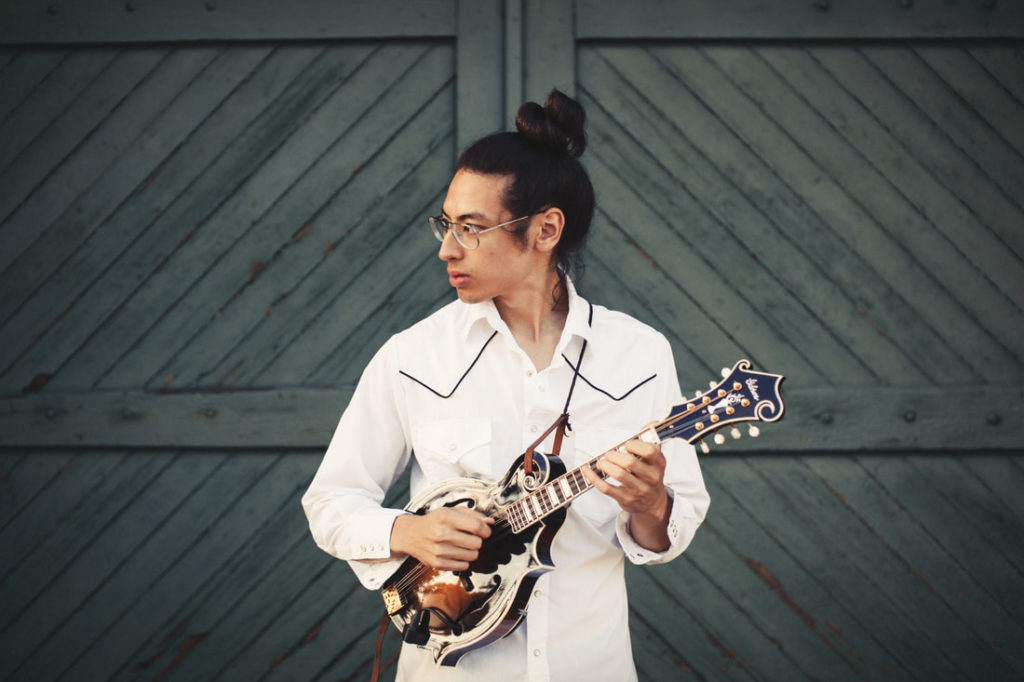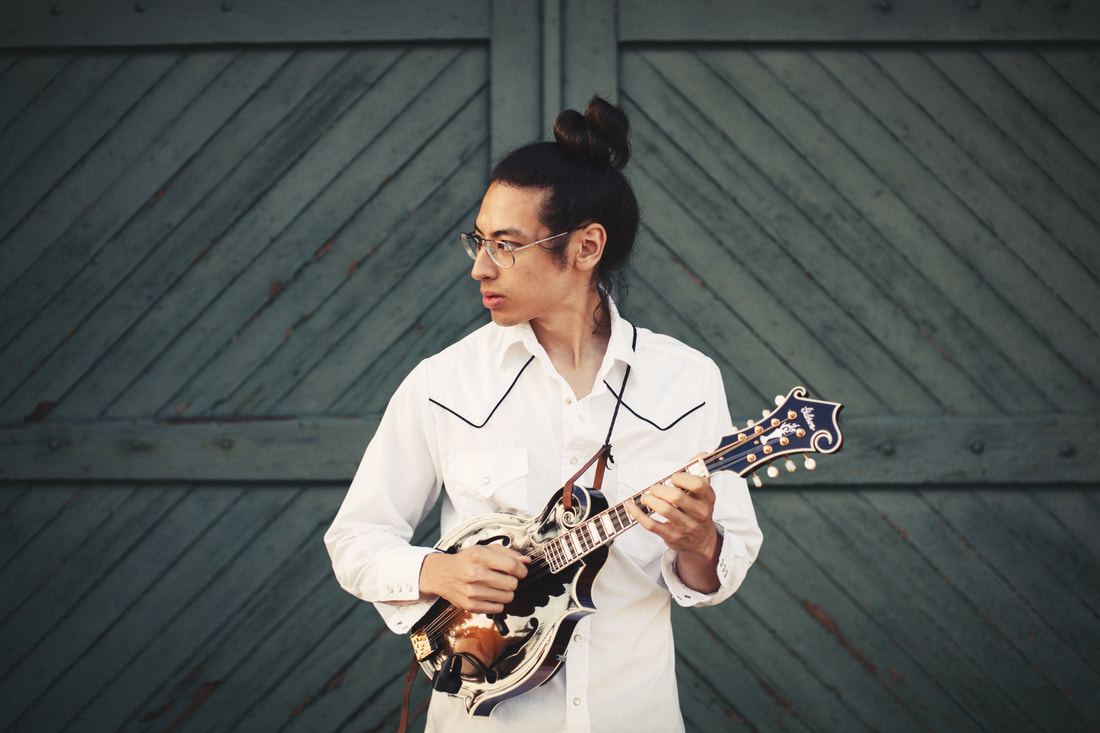Mando Maestro: Ethan Setiawan Interview and “Tacks” Track Premiere
The world of New England instrumental music is one that I am really just brushing the surface off of. There are so many incredibly talented artists that are using the varying landscapes from craggy mountain faces and towering pines to rocky coasts and crashing waves to inspire their music that doesn’t have (or need) words to portray a feeling and a story.

photo by Louise Bichan
Ethan Setiawan is just one of those artists and he has a new record on the horizon that will weave his prowess for the mandolin with the musical threading of his friends and contemporaries performing alongside him.
The record is due out later this year but Ethan has just launched a pre-order on Kickstarter to help with some of the funding and efforts to get the record out into the world. You can check out that project page HERE and in the meanwhile get a sneak peek at one of the tracks from the album called “Tacks” below.
There is a real grace and fluid nature to the tune. Eliciting a smile across my face as the thump of the bass holds up bowed fiddle strings and lightnining mandolin runs. But there is such an overarching stability and smoothness to the track and arrangement that even when you feel it going into some pretty exciting and improvised sections, it always lands right back where it belongs. Some really exciting and virtuosic performances here and we can’t wait to hear more.
RLR: I know this is a fiddle tune inspired record. Are these all original arrangements? Tell me a little about your writing process as it relates to these songs. How do you typically unearth your ideas? Are you a “sit down and complete a tune from first to last note” or more of a compile over time, an A part one day, a B part the other day and pull it all together later? What inspires you?
ES: The record is all original except for one fiddle tune, and they’re all original arrangements. One of my big discoveries from the process of making this record was that if the tune itself is solid, the arrangement will seem apparent. To that end, I spent a lot of time writing these tunes, and then when we started to rehearse them, the arrangements came together quite easily. At the time, I was taking lessons from Joe K. Walsh and he was an extremely helpful second voice in the writing process. One of the things that we did together was coming up with a prompt; a melodic seed, or a rhythmic fragment, and coming up with a tune drawing on that. Carrot Seed and FSU both came out of that type of process. Another exercise I like to do is time myself writing tunes. One way I learned from Tony Trischka. He sets a timer for 1 minute and the challenge is to write a full tune in that timespan. You can imagine, if you’re writing an AABA tune, once you get back to the A part it’s a challenge to remember! Julian Lage does a variant where you give yourself multiple minutes, sometimes up to 15 or 16 minutes. You can’t stop playing, and so you end up with this massive amount of notes, and the task then is to edit it down into the best version that it can be. Tacks came out of this process.
RLR: In some ways I think you have an even more difficult task in performing/producing a record of instrumental music. Lets just take any classic fiddle tune or reel, a song called “Salt Creek”…how can that melody transport you to an actual place or time? One of my favorite instrumentalist, Ben Cosgrove does this extremely well with songs like “Montreal Song” and “Champlain”, but has mentioned that it is still something he struggles to project to an audience from time to time. Do you find that struggle in using just your instrument to portray a place or an emotion or event in your life that you are trying to convey? How do you overcome that as an artist without using words?
ES: I think it’s true that in general, audiences have a harder time connecting to solely instrumental music over vocal music. My answer is to make the goal for your (instrumental) music to resemble speech. If a person has the technical and musical chops to express whatever they’re feeling through their instrument, this will resemble speech in a way. Ideally, that person is portraying pure emotion, through their instrument. Improvisers like Julian Lage, who simply does not have a barrier between the ear and the fingers, is an example of someone who does this really well. Another route to go is to amuse people. I think the fiddle tune on this record, Booth Shot Lincoln, does a pretty good job of that. Ultimately, instrumental music is most well received when the audience is in a good listening mood, and what the musicians play can create that space.
RLR: What are you most excited about from this next album?
ES: I’m really excited about the band that played. Julian Pinelli, Sam Leslie, and Jacob Warren are all folks that I play with on a regular basis, but this band hadn’t played together until the rehearsals leading up to the session. They really lifted this music and these tunes to the next level.
RLR: If there was one song from this record that you hoped would stand the test of time and people would still be listening to and enjoying in 100 years what song would it be and why?
ES: have to sorta cheat on this question; there’s 2 tunes that always make me smile. Metaphorical Door is one I wrote with Sam and Avery Merritt, another great Boston fiddle player who also plays fiddle on this track. This recording happened at the end of a busy semester at Berklee, where me, Julian, Sam, and Avery are all in school, and having us all in the same place recording this tune we wrote together was a fitting end to the year. It’s called Metaphorical Door because on my way into school, I ran into a car door on my bike, and Sam subsequently asked me, “was it a metaphorical door?” I’m also really into how Untitled 12 turned out. It’s the oldest tune on the record, from April of 2015, and I’ve played it in several contexts, and this is my favorite version. Sam’s solo is one of my favorite moments on this record.
RLR: What do you find inspires you the most when you sit down to write or play? An object, a place, an atmosphere?
ES: I really like writing/practicing outdoors when the weather cooperates. For me there’s something about being out in nature that’s inspiring. When that’s not a possibility I do what I can to put myself in a headspace that promotes creativity. New places are good for this, I find when I’m traveling it’s easy to come up with new seeds for solos or tunes. When I’m in one place for a long time, the space starts to feel stale.
RLR: A big part of RLR is community and fostering some sense of it within the New England music landscape. How have you found that community to have impacted you as an artist? You have some heavy hitters helping out with everything from producing to the album art on this album so it would seem that :a little help from your friends” is something you hold dear.
ES: The Boston/New England roots music community has been amazing for me over the past couple years. Being around a ton of great pickers has pushed me, not to mention the fact that they’re all nice folks and welcomed me into this scene. Julian and Sam who play on the record are 2 of my favorite musicians in the whole world, and I’m housemates with one of them. Dan Bui, who engineered is in Twisted Pine, a great band from this scene, and was the perfect engineer for this project because he knows exactly the sound that I was going for, as he plays this type of music. Louise Bichan who’s doing design, and did photos and videos is another housemate. She’s an amazing Scottish fiddler as well as a fantastic videographer and photographer. All in all, this record would be wildly different without the New England roots community.
RLR: Anything else you really want to plug before we say “goodbye”?
ES: I’m in this band with Louise (Bichan) and guitarist Ethan Hawkins called Corner House that we’re stoked about. We’ve got a couple of videos out over on our Facebook page: https://www.facebook.com/cornerhouseband/

